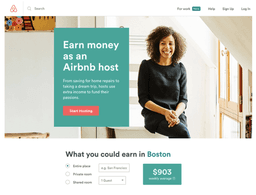Using Landing Pages for More Effective Digital Marketing

If you’re launching a marketing campaign for a specific product or service, a landing page is a great way to turn users who are interested in what you’re selling into customers. Containing information specific to the offer, your landing page can feature a streamlined path to conversion — making it more effective than a regular website page.
Our Digital Marketing Director shares what you need to know about how to create landing pages that support your business goals and drive conversions.
Landing Pages
A landing page is a customized web page designed to promote specific digital marketing campaigns or improve SEO performance for a commonly searched term or phrase. Its purpose is to provide users with a specific experience based both on the information that you expect them to be looking for, as well as any information you can provide to entice them to take action. Think of features, benefits, testimonials, and other persuasive details that will convince a user that they need this product or service.
Unlike a normal website page, landing pages provide only the relevant information a user needs before taking action. A landing page should exclude any unnecessary information about the business or other product or service offerings to prevent distractions or roadblocks in their journey. On an e-commerce website, a landing page might offer an introduction to a product, special offer, and product specifications/differentiators — and then provide an easy click-through to purchase. This can allow for a better pitch and generally higher conversion rate than a standard product information page.
Using Landing Pages To Improve Performance
Landing pages make it easier to generate leads by creating a shorter path to conversion, increasing the likelihood that a user will complete the desired action on the page. Plus, landing pages are tailored to your business goals, so you can generate leads and sales for specific products or services — without any unnecessary distractions that can prevent users from taking the specific actions you want them to take. In organic search, landing pages can provide information that addresses anticipated search queries.
Landing Page vs. Home Page
Businesses often make the mistake of using their home page in place of a landing page because it contains general information about their business and offerings. The problem here is that users are often looking for specific information, especially when they click on an advertisement. Sending them straight to the home page forces them to dig through your website to find it — and potentially leave your site altogether to find what they want in an easier manner.
On the other hand, a landing page provides the most important information a user needs to know before they take action. This creates a more cohesive journey from interest to awareness to consideration and, finally, to action.
Building Effective Landing Pages
- Consider the flow of information on the page. The most important information should be “above the fold” — or before you’d need to scroll down on the page — for the user to easily digest. Focus on organizing information in a way that convinces the user to make a conversion as soon as possible. Since a landing page is designed to help you pitch a product or service, make sure you highlight differentiators that set you apart.
- Use special offers and limited-time offers to entice users to take action now. Communicated scarcity bias can be a powerful marketing tool, especially in e-commerce. When users feel like they might not have another opportunity at a great offer, they’re more likely to take action right away.
- Set up tracking on the page. Understanding what users are doing on your landing page can help you continue to refine what’s creating the most effective experience for your specific customers. Heatmaps, click tracking and conversion tracking can all help you better understand where users are getting caught up, engaging or leaving the page altogether, allowing you to break down any barriers.
- Use A/B testing. A/B testing can help you figure out how different approaches to the landing page can drive different results. Try testing a variety of headlines, layouts, offers, and form fields to determine which are most appealing to your audiences and inspire the highest conversion rates. Check out tools such as Unbounce and Instapage, which let you easily test multiple landing page variations.
- Remove any unnecessary distractions from the landing page. Avoid having a navigation bar on your landing page, which could encourage users to continue gathering information rather than making a purchase or generating a lead. Also consider removing irrelevant information from the footer. Instead, include a newsletter or email sign-up that gets users into the marketing funnel, even if they aren’t ready to submit a lead form or make a purchase.
Stick Your Landing (Page)
Landing pages are essential in today’s digital world — but it takes research, SEO know-how, copywriting prowess, and a user-focused design to get it right. Need help crafting landing pages that meet your business goals and inspire action? Our digital marketing experts are here to help. Contact us today to learn more about our services and to get started.
